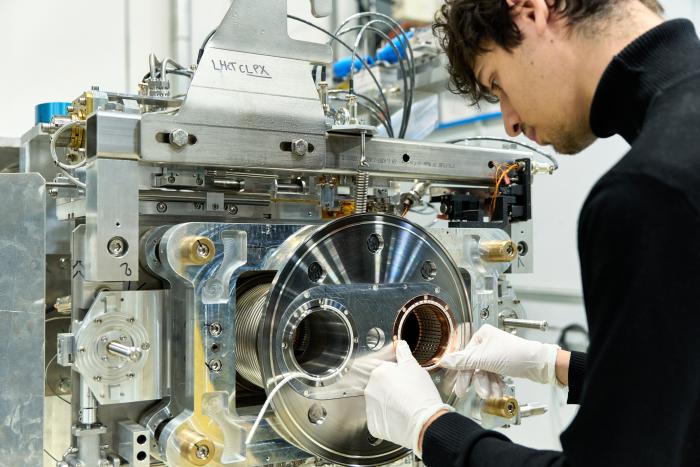New RF Springs for HL-LHC double-beam collimators
By Lucas Hermida Pena (CERN)

Collimators are Beam Interaction Devices (BIDs) designed to remove stray particles from the beam bunches which could damage sensitive equipment.
Recently, two fully functional prototype double-beam collimators were fitted with new radiofrequency springs and then installed onto the assembly mock-up. In the current LHC, all collimators are single-beam, but these double-beam collimators are designed to handle both circulating beams, where one is cleaned by the jaws (blocks to intercept stray particles) and the other passes untouched through a drift tube.
The proton bunches, traveling through the LHC at nearly the speed of light, induce image currents in nearby materials. Without proper conductivity between components, these currents could cause heating, discharges, or beam instabilities.
In the new double-beam collimator design, there is a thin but deep gap between the flanges, connective elements commonly used to join pipe components together, due to their large diameter (DN300). In order to bridge this vacuum gap between the flanges, the collimators will be fitted with new RF springs – different from the traditional RF fingers.
These precise RF contacts ensure electrical continuity between collimator flanges under vacuum, allowing image currents to flow smoothly across these new vacuum gaps, protecting system performance and stability.